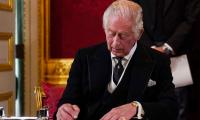In his recent book, ‘Education Policies in Pakistan’, Shahid Siddiqui states that the major challenge before policymakers in Pakistan has been the choice of language and its central role in the process of learning.
Since 1947, Pakistan has tried nine different policy guidelines in education. Interestingly, out five of these were crafted during the reigns of various military dictators. The first policy document on education is the recommendations adopted in Pakistan’s first education conference held in Nov-Dec 1947 in Karachi.
Since then, till 1959 – soon after General Ayub took over the government – we see no comprehensive document on education. Before Ayub’s regime there were strikes in East Pakistan on the question of the national language. On Feb 21, 1952, at least seven students were killed in Dhaka when they were protesting against Urdu being made the sole national language of then Pakistan. They demanded the same status for Bengali. In 1954, the government approved Bangla as a national language along with Urdu; this was also incorporated in the 1956 constitution but because of political instability concrete measures could not be taken and the people of East Pakistan could not be satisfied.
The second document on education is the report of the Commission on Education or the Sharif Report in 1959. The third policy on education came in 1970 when Pakistan was ruled by General Yahya Khan. The fourth education policy was designed in 1970 during the regime of Zulfikar Ali Bhutto and after the separation of East Pakistan.
When General Ziaul Haq snatched power from Bhutto in 1977 he tried to change everything, including education. He announced the National Education Policy and Implementation Plan in 1979. His plan was to Islamise and Urdu-ise society.
The next education policy came when Muhammad Nawaz Sharif was the prime minister of Pakistan in 1992. The eighth document in education policy was crafted when Muhammad Nawaz Sharif was the prime minister for the second time. The last one, the New Education Policy, was the work of the Musharraf regime but was presented by the PPP’s government in 2009.
The report of the first education conference in 1947 maintained Urdu as the lingua franca of Pakistan because of its historical links with Arabic, Persian, Sanskrit and English. The conference regarded English ‘injurious’ as a medium of instruction but recognised it as a tool of access to Western knowledge and culture. Some role of the so-called provincial languages was recognised, maintaining that the choice of medium of instruction at schools be given to the provinces along with having Urdu as a compulsory language in each province.
In the backdrop of the protests and killing of students in 1952 in Dhaka, the Education Commission of 1959 recognised Bengali and Urdu as the national languages of Pakistan. It suggested that the national language(s) should gradually and progressively replace English as the medium of instruction at all levels.
The education policy of 1969 suggested Urdu as the official language of West Pakistan and Bengali for East Pakistan. The 1970 education policy had nothing new to offer except a number of characteristics for a medium of instruction.
In 1973 Pakistan got the first nationally approved constitution. Two specific articles – Article 28 and Article 251 – were devoted to the language issue in it. Article 28, subject to Article 251, allows citizens to practise and promote their languages.
In 1979, during the Zia regime, an education policy was designed in order to meet the personal whims and ideologies of the dictator. Urdu was made the medium of instruction. Even private schools were directed to use Urdu as the medium of instruction. This was, however, unsuccessful as the English medium elite school lobby was too strong. Urdu was, however, made a symbol of Muslim identity during this period and greater resources were provided for the production of books in Urdu which mainly focused on Muslim history and religious studies.
With the restoration of democracy in 1989 till its end in 1999 we see no remarkable policies in education. The two policies made by the first and second Nawaz governments had no impact except giving importance to the Arabic language and the teaching of Islamic studies.
In 2009, a year before the 18th Amendment to the constitution, Pakistan had a comprehensive document, crafted during the Musharraf regime. The policy placed much importance on English, at the same time also calling English one of the factors responsible for educational inequality in Pakistan. English was made a compulsory subject from kindergarten.
The policy suggested inclusion of English as a subject, and Urdu, one regional language, mathematics and an integrated subject in the curriculum from class 1 onwards. However, the choice of medium of instruction was given to the Provincial and Area Education Department up to class V. English was also made the medium of instruction for science and mathematics from class VI onwards with the option of teaching mathematics and science in English or Urdu or the official regional language for five years; after five years the subjects would be taught in English.
In 2010, the 18th Amendment devolved a number of subjects to the provinces including education. However, the provinces did not avail the opportunity. In 2012, the ANP-led Khyber Pakhtunkhwa government passed the Khyber Pakhtunkhwa Promotion of Regional Languages Authority Act for the promotion of regional languages, by “recommending to the government a curriculum and syllabus for the gradual teaching of the regional languages spoken in the province”.
For the 2013-14 school year, it also introduced four other regional languages to be taught in the pre-primary classes in areas where these languages were the mother tongue of a majority of children, aiming to make such language classes gradually compulsory throughout primary school.
A critical review of these policies leads us to conclude that the language issue has not been given much priority. Instead, more emphasis was placed on the political aspect of language.
Urdu could not be made official language despite multiple promises. The social status of English could not be changed in Pakistan and it consistently remains a ‘language of power’, being the language of the major power wielders – military, judiciary and bureaucracy. The policies oscillated between English, Urdu and the so-called provincial/regional languages. The education policy altogether ignored the other 65 native/mother languages of Pakistan.
English is an important language. To remove English from the teaching process is to refuse access to various means of information and knowledge in the world. It must be there – but not at the cost of the local languages. Urdu has virtually become a lingua franca in Pakistan. But the importance of English and Urdu must not be at the cost of the more than 65 other languages that are the native languages of the people of Pakistan. All these languages need special attention as many of them are fast dying along with the rich folklore, history, culture and indigenous wisdom.
Pakistan needs a trilingual model wherein the native/mother tongue must be the medium of instruction at the primary level along with Urdu and English as subjects. At the level of higher education the mother tongue must be included as a subject.
The writer heads an independent
organisation dealing with education and development in Swat.
Email: ztorwali@gmail.com
Challenge for writers, readers, and activists today is to break down barriers that divide literature from people it is...
US must ditch tariff fetish, rally its allies and sit down with China to salvage trade before floor caves in
Only through establishment of hard state can Pakistan secure its future and ensure justice, security
At fifth meeting, strong critical voices from around world expressed concern over proposed list of ‘partners’ for...
Invention of Bakelite by Belgian chemist Leo Baekeland in 1907 marked beginning of large-scale plastic production
It was found that at least 60% of answers given by AI were inaccurate or blatantly incorrect







